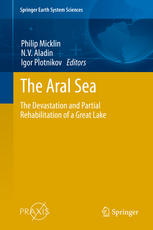

Most ebook files are in PDF format, so you can easily read them using various software such as Foxit Reader or directly on the Google Chrome browser.
Some ebook files are released by publishers in other formats such as .awz, .mobi, .epub, .fb2, etc. You may need to install specific software to read these formats on mobile/PC, such as Calibre.
Please read the tutorial at this link: https://ebookbell.com/faq
We offer FREE conversion to the popular formats you request; however, this may take some time. Therefore, right after payment, please email us, and we will try to provide the service as quickly as possible.
For some exceptional file formats or broken links (if any), please refrain from opening any disputes. Instead, email us first, and we will try to assist within a maximum of 6 hours.
EbookBell Team

4.3
78 reviewsThe book is structured into six core parts. The first part sets the scene and explains how the use of Aral basin water resources, primarily used for irrigation, have destroyed the Aral Sea. The team explains how spheres and events interact and the related problems. Part 2 examines the social consequences of the ecological catastrophe and the affect of the Aral Sea desiccation on cultural and economic conditions of near Aral region. Part 3 explores the scientific causes of the destruction using detailed analyses and data plus some of their own research spanning aquatic biology, terrestrial biology, hydrology, water management and biodiversity. They also share some of the latest archaeological discoveries and paleobotanical analysis to delineate past levels and characteristics of the Aral Sea. There is particular focus on modern remote sensing and GIS techniques and how they can monitor the Aral Sea and the environment. Part 4 discusses regional and international initiatives to mitigate human and ecological problems of the Aral Sea and the wider political and economic consequences. With thorough insight of the total environment cost, the final chapters of the book will provide lessons for the future. There are insightful case studies throughout. Multidisciplinary by nature, all titles in our new reference book series will explore significant changes within the Earth’s ecosystems and to some extent, and will tackle ways to think about our changing environment.